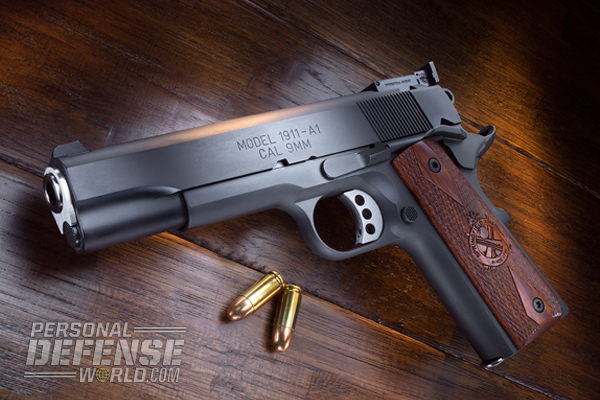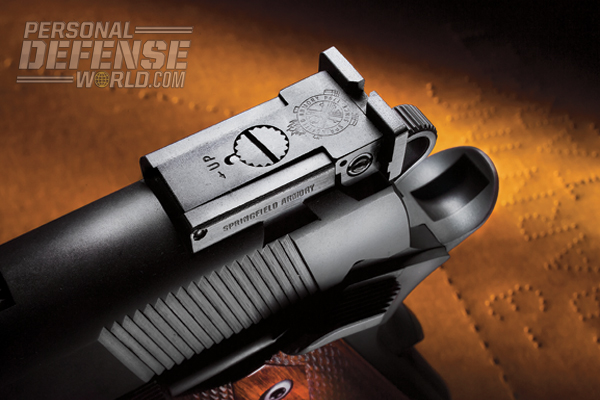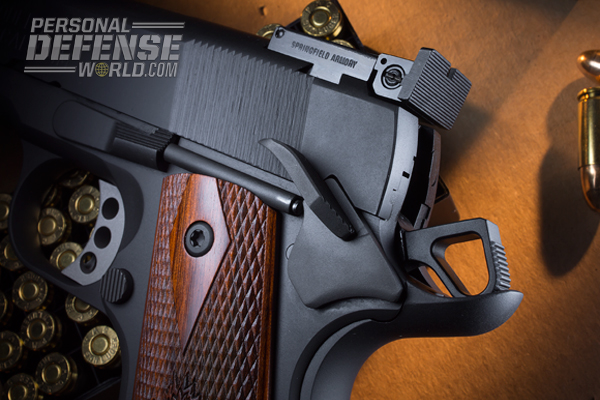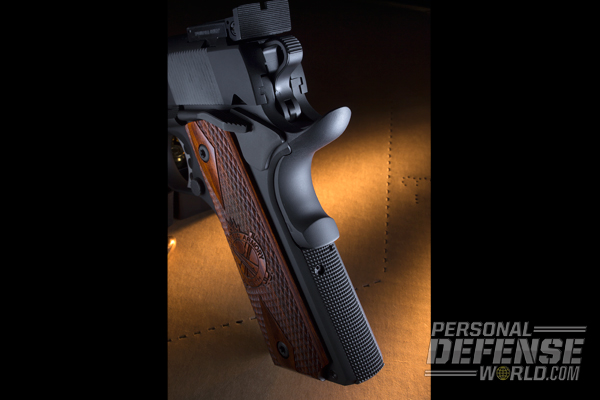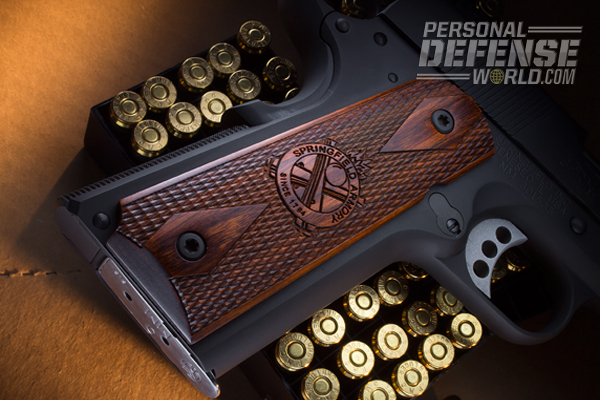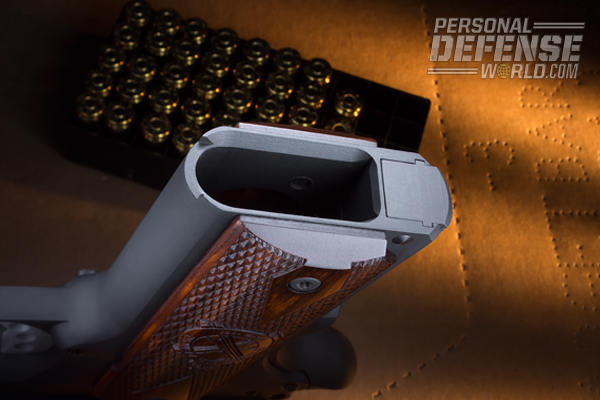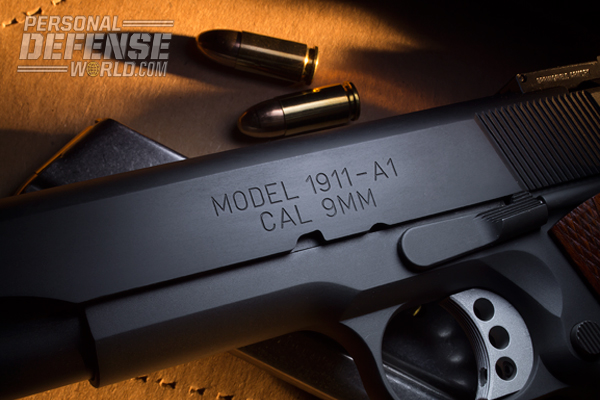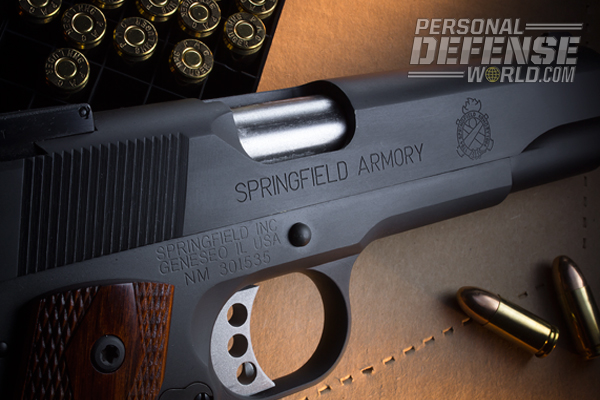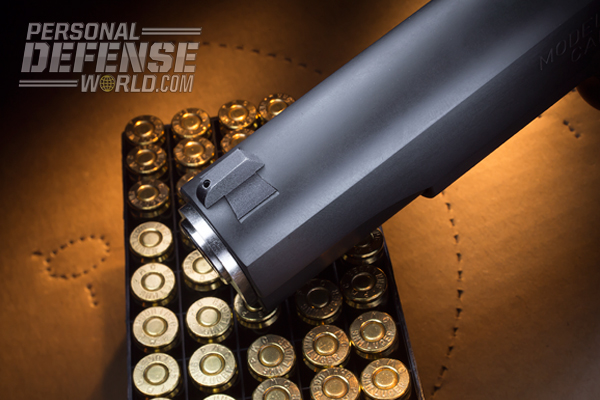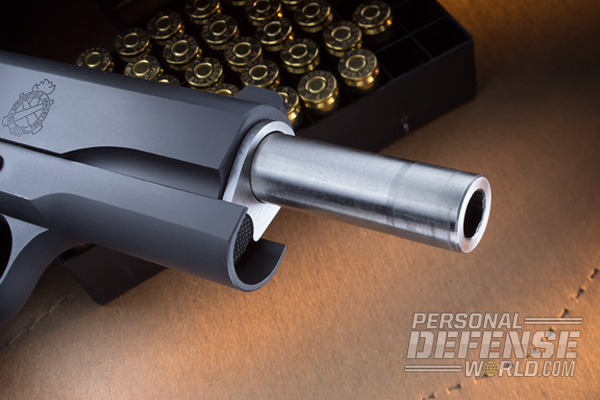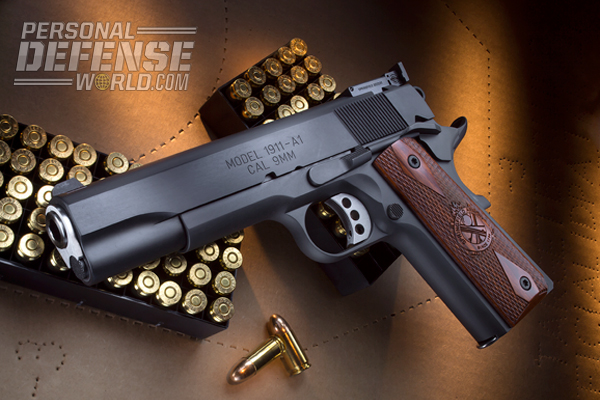The new Springfield Armory 9mm Range Officer is an encore to the very successful .45 ACP Range Officer, which debuted in 2012. Though .45 ACP is by far the most prevalent caliber for the 1911 platform, pistols chambered in 9mm are now widely available and are being made by an increasing number of manufacturers.
There are compelling reasons why choosing a 9mm 1911 makes sense, particularly for target and competition use where the additional power and self-defense superiority of the .45 ACP are superfluous. Ammunition costs approximately 30 percent less than comparable .45 ACP loads, and recoil is milder, which often translates into more live-fire practice. The 9mm is also a great transition cartridge for a shooter who has become proficient with .22 LR and wants to step up to a centerfire.
The Range Officer is well suited to the many new shooters who have recently entered the market and prefer the advantages of the 1911’s crisp, sliding single-action (SA) trigger and balance over “polymer frame, polymer trigger” offerings, which are suitable for concealed carry but quickly show their weaknesses in bullseye-style shooting, where shot placement matters most.
Advertisement — Continue Reading Below
As its moniker implies, the Range Officer is made for informal competition, and the pistol’s sights, trigger and barrel are what Springfield Armory focused on when designing the gun. Tactical features with little or no application to target shooting are absent from the pistol—and its price.
Custom-Like Details
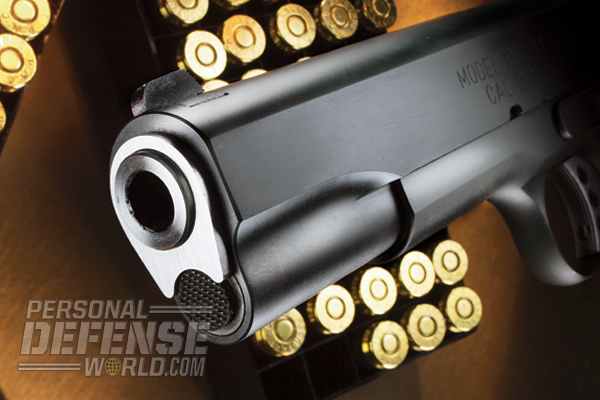
The Range Officer is a full-size, American-made pistol. The locking system follows the conventional Browning design that uses a swinging link to attach the barrel block to the pistol’s frame via the slide stop pin, and the standard GI recoil spring guide rod that allows disassembly without tools.
Advertisement — Continue Reading Below
The Range Officer is designed to provide superior target shooting performance for all but very formal competition within a price range that’s less than $1,000. It accomplishes this by including features that are relevant to its intended purpose and leaving off the “added cost” extras. For instance, the Range Officer has all of the functional features—extended beavertail grip safety, lowered/flared ejection port for more reliable ejection, longer trigger made lighter with skeletonized cuts, lightened hammer for faster lock time—that any shooter would appreciate and that two decades ago were considered aftermarket customizations. However, a tactical rail, an ambidextrous safety, frontstrap checkering and front slide serrations are left out in favor of what matters most.
More significantly, the Range Officer is made using the same forged carbon steel slide and forged frame, and shares the same trigger and hammer, as the higher-priced Trophy Match and TRP pistols. The pistol also features a match-grade stainless steel barrel and bushing. (The barrel diameter increases slightly at about 1 inch behind the muzzle to help make the lockup consistent.)
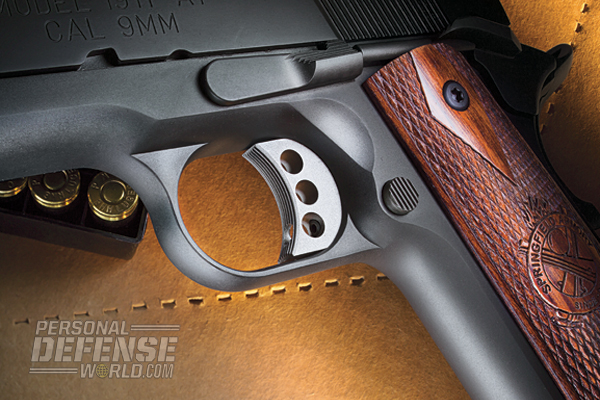
The Range Officer has a lightened, skeletonized, medium-length trigger with a set screw to adjust overtravel. Overtravel is the added distance that the trigger moves after releasing the hammer, and minimizing it reduces the tendency of shooters to dip the muzzle by camming the pistol downward. Underscoring Springfield’s attention to detail, the trigger is well fitted and does not have excess side-to-side or top-bottom play. The specified trigger pull weight is 4.5 to 5.5 pounds, and my sample had a clean let-off and measured 4.3 pounds using a Lyman electronic trigger pull gauge.
Advertisement — Continue Reading Below
Fit and finish of the Range Officer are very good, and no corners seem to have been cut in assembly. Another welcome feature is the lack of a plastic mainspring housing, which, sadly, some pistol-makers are now using instead of steel in at least some models in their 1911 lines.
The steel sights are the same fully adjustable target style used on Springfield Armory’s higher-priced competition pistols, and they give a very clear sight picture. They feature fine horizontal serrations on the rear edges to reduce glare and lend a crisp image to the shooter. Adjustment is simple using a screwdriver, and the sights are dovetail mounted, which I strongly prefer instead of staked because they can be easily replaced or drift adjusted for windage. This sight is finely calibrated, and each click moves point of impact 0.375 inches at 50 yards.
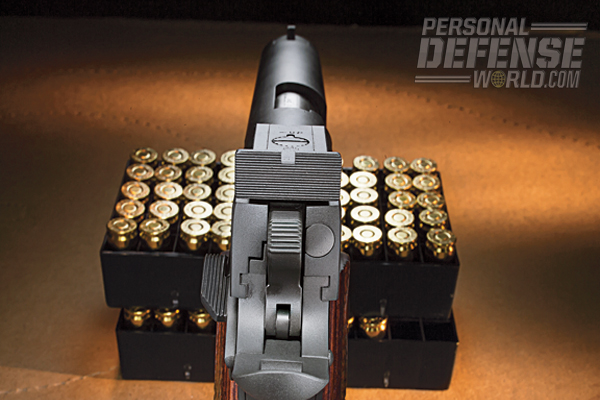
The Range Officer has a smooth, Parkerized finish. The grips are made of cocobolo wood, which is attractive, durable and expensive as compared to other stock grips often seen on 1911s. The Springfield Armory logo and diamond-pattern checkering are very nicely executed.
Advertisement — Continue Reading Below
Though the Springfield Armory manual advises not to carry a round in the chamber until ready to fire, the Range Officer has a lightweight, titanium firing pin and an extra-power firing pin spring that the company explains makes the pistol “drop safe.” This particular system is preferred by some target shooters who feel the trigger pull is smoother than designs that use the other commonly used drop-safe method, known as a “Series 80”-style firing-pin safety. The Series 80 system incorporates a spring-loaded plunger into the slide, which prevents the firing pin from moving forward unless the trigger is depressed.
Like all current-production Springfield Armory 1911s, the Range Officer has an internal mechanism that will lock the hammer in the downward position when applied. The locking device is unobtrusively located in the mainspring housing, is activated with a small key and does not affect reliability in the least.
RO 9 Range Report
Advertisement — Continue Reading Below
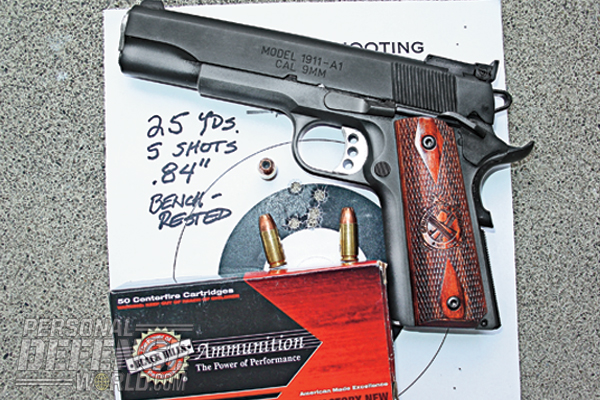
The Springfield Range Officer performed exceptionally for a 1911 in its price range—indeed, it is among the most accurate 1911 pistols I have ever tested. Firing from a Caldwell rest at 25 yards, Black Hills 115-grain JHP loads turned in a best five-shot group of 0.84 inches and an average of 1.75 inches. All groups were less than 2 inches wide when measured center to center. Moreover, all three brands of ammo tested shot very accurately, and I am certain that the results would be even better had I tested this pistol using a machine rest. Though the pistol printed a few inches high from the box, the sights were easily adjusted and windage was right on the mark. Reliability was very good with one failure to feed a hollow-point round in 200-plus rounds of testing.
The chronograph told a familiar story on the ammunition selected. Black Hills ammunition shot an average of 131 fps faster than the equivalent weight Winchester USA brand round. The USA brand ammunition is an economical and reliable FMJ practice load that’s ideal for casual use and for teaching new shooters. The Black Hills ammo costs much more, but provides everything a custom round should offer—accuracy, reliability and full-power performance.
It is important for defensive rounds to be loaded to full power because they must drive hollow-point bullets fast enough to reliably expand on target. The Black Hills 9mm +P load is one such round that approaches .357 Magnum performance. This Black Hills +P load is also accurate, producing a best five-shot group of 1.2 inches.
Advertisement — Continue Reading Below
The Takeaway
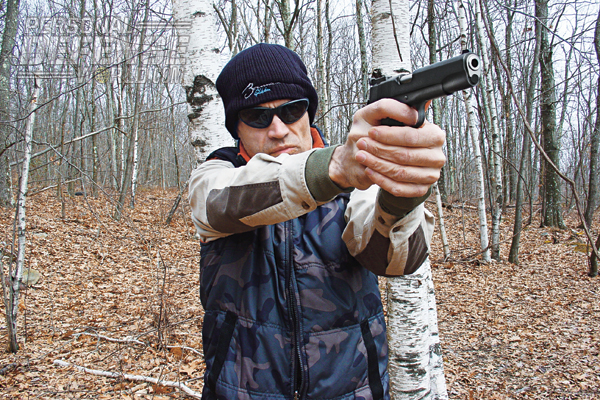
The Range Officer is a well-made pistol with accuracy that is competitive with far more expensive 1911s. The forged frame is a sign of added quality, and the value of the match-grade components used in the Range Officer is evident in this pistol’s range performance. Added accessories and a lifetime warranty make this American-made pistol one of the best values in 1911s available.
Simple upgrades I would consider are adding bumper pads to the magazines for shooting matches requiring reloading under time constraints and an ambidextrous safety (those who want more options can contact Springfield’s Custom shop).
Advertisement — Continue Reading Below
For more information, visit http://www.springfield-armory.com or call 800-680-6866.
